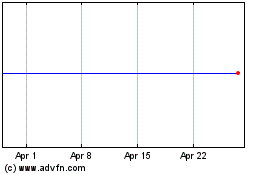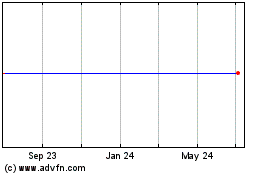LOKELMA US Label Updated to Include Dosing Guidance for the Treatment of Hyperkalemia in Patients With End-Stage Renal Diseas...
April 27 2020 - 7:00AM
Business Wire
Label update is based on data from Phase
IIIb DIALIZE trial
Today, the US Food and Drug Administration (FDA) approved a
label update in the US for AstraZeneca’s LOKELMA® (sodium zirconium
cyclosilicate) to include a dosing regimen specifically to treat
hyperkalemia in patients with end-stage renal disease on chronic
hemodialysis.
The approval by the US FDA was based on positive results from
the Phase IIIb DIALIZE trial, the first ever randomized,
placebo-controlled trial to evaluate a potassium binder in patients
on stable hemodialysis. The DIALIZE trial showed that a
significantly higher proportion of patients in the LOKELMA group
(41.2%) met the primary endpoint and were classified as responders
(maintained serum potassium 4-5 mmol/L during at least three out of
four hemodialysis sessions after the long interdialytic interval
[LIDI] of the last four weeks of treatment and did not require
urgent rescue therapy) compared to patients in the placebo group
(1.0%), making it a statistically significant (P<0.001) and
clinically meaningful improvement. Rescue therapy was defined as
any urgent therapeutic intervention considered necessary to reduce
serum potassium for severe hyperkalemia (serum potassium >6.0
mmol/L). The safety profile of LOKELMA observed in DIALIZE was
consistent with previous trials.
LOKELMA is a potassium binder indicated for the treatment of
hyperkalemia in adults. LOKELMA should not be used as an emergency
treatment for life-threatening hyperkalemia because of its delayed
onset of action. This is the first label update for LOKELMA in the
US following its FDA approval in 2018 to treat adults with
hyperkalemia. The label update now includes a dosing regimen for
patients on chronic hemodialysis with a starting dose of 5 g once
daily on non-dialysis days and a starting dose of 10 g once daily
on non-dialysis days in patients with serum potassium greater than
6.5 mmol/L.
Mene Pangalos, Executive Vice President, BioPharmaceuticals
R&D, said: “More than 500,000 patients in the US are living
with dialysis-dependent end-stage renal disease and could be at
risk for dangerously high levels of potassium. With this FDA
approved update, the LOKELMA label now includes important dosing
guidance for treating hyperkalemia in patients on
hemodialysis.”
LOKELMA is currently approved in the US, EU, Canada, Hong Kong,
China, Russia and Japan for the treatment of patients with
hyperkalemia. LOKELMA recently received a positive opinion from The
Committee for Medicinal Products for Human Use (CHMP) of the
European Medicines Agency (EMA) on a dosing and administration
label update to include patients with hyperkalemia on stable
hemodialysis. A final decision is expected from the European
Commission in the near-future.
IMPORTANT SAFETY INFORMATION FOR LOKELMA® 5 g and 10 g
(sodium zirconium cyclosilicate)
WARNINGS AND PRECAUTIONS:
- Gastrointestinal Adverse Events in Patients with Motility
Disorders: Avoid LOKELMA in patients with severe constipation,
bowel obstruction or impaction, including abnormal post-operative
bowel motility disorders. LOKELMA has not been studied in patients
with these conditions and it may be ineffective and may worsen
gastrointestinal conditions.
- Edema: Each 5-g dose of LOKELMA contains approximately
400 mg of sodium, but the extent of absorption by the patient is
unknown. In clinical trials of LOKELMA in patients who were not on
dialysis, edema was observed and was generally mild to moderate in
severity and was more commonly seen in patients treated with 15 g
once daily. Monitor for signs of edema, particularly in patients
who should restrict their sodium intake or are prone to fluid
overload (eg, heart failure or renal disease). Advise patients to
adjust dietary sodium, if appropriate. Increase the dose of
diuretics as needed. In a clinical trial of LOKELMA in patients on
chronic hemodialysis in which most patients were treated with doses
of 5 g to 10 g once daily on non-dialysis days, there was no
difference in the mean change from baseline in interdialytic weight
gain (a measure of fluid retention) between the LOKELMA and placebo
groups.
- Hypokalemia in Patients on Hemodialysis: Patients on
hemodialysis may be prone to acute illness that can increase the
risk of hypokalemia on LOKELMA (eg, illnesses associated with
decreased oral intake, diarrhea). Consider adjusting LOKELMA dose
based on potassium levels in these settings.
ADVERSE REACTIONS: The most common adverse reaction in
non-dialysis patients with LOKELMA was mild to moderate edema. In
placebo-controlled trials up to 28 days, edema was reported in
4.4%, 5.9%, 16.1% of non-dialysis patients treated with 5 g, 10 g,
and 15 g of LOKELMA once daily, respectively vs 2.4% of
non-dialysis patients receiving placebo.
DRUG INTERACTIONS: LOKELMA can transiently increase
gastric pH. In general, oral medications with pH-dependent
solubility should be administered at least 2 hours before or 2
hours after LOKELMA. Spacing is not needed if it has been
determined the concomitant medication does not exhibit pH-dependent
solubility.
INDICATION AND LIMITATION OF USE
LOKELMA is indicated for the treatment of hyperkalemia in
adults.
LOKELMA should not be used as an emergency treatment for
life-threatening hyperkalemia because of its delayed onset of
action.
DOSING
- Non-hemodialysis Patients For initial treatment of
hyperkalemia, the recommended starting dose is 10 g administered
three times a day up to 48 hours. For maintenance treatment, the
recommended starting dose is 10 g once daily. Monitor serum
potassium and adjust dose of LOKELMA at 1-week intervals or longer
in increments of 5 g based on serum potassium and desired target
range. The recommended maintenance dose range is from 5 g every
other day to 15 g daily. Discontinue or decrease the dose of
LOKELMA if serum potassium is below the desired target range.
- Hemodialysis Patients For patients on chronic
hemodialysis, administer LOKELMA only on non‑dialysis days. The
recommended starting dose is 5 g once daily on non-dialysis days.
Consider a starting dose of 10 g once daily on non-dialysis days in
patients with serum potassium greater than 6.5 mEq/L. Monitor serum
potassium and adjust the dose of LOKELMA based on the pre‑dialysis
serum potassium value after the long interdialytic interval and
desired target range. During initiation and after dose adjustment,
assess serum potassium after one week. Discontinue or decrease the
dose of LOKELMA if serum potassium falls below the desired target
range based on pre-dialysis value after the long interdialytic
interval or the patient develops clinically significant
hypokalemia. The recommended maintenance dose range is from 5 g to
15 g once daily, on non-dialysis days.
PLEASE READ FULL PRESCRIBING INFORMATION.
Hyperkalemia
Hyperkalemia is characterized by high levels of potassium in the
blood, generally classified as greater than 5 mmol/l. Many people
living with chronic kidney disease (CKD) have hyperkalemia despite
being on hemodialysis and often experience fluctuations in their
potassium levels. Patients with high variability in potassium
levels between dialysis sessions are at significant risk of
arrhythmias which can lead to cardiac arrest. Hyperkalemia occurs
in 23% to 47% of patients with CKD and/or heart failure with an
estimated 700 million and 64 million people respectively, living
with each condition worldwide.
DIALIZE
DIALIZE is the first ever randomized, placebo-controlled trial
to evaluate a potassium binder in patients on stable hemodialysis.
The Phase IIIb, multicenter, double-blinded trial investigated the
efficacy of LOKELMA versus placebo in 196 patients on hemodialysis
with hyperkalemia. Patients were randomized to receive LOKELMA or
placebo once daily on non-dialysis days for a treatment period of
eight weeks. This included a four-week dose adjustment phase and a
four-week evaluation phase on stable dose.
The full results of the DIALIZE trial were published in
September 2019 in the Journal of the American Society of
Nephrology.
LOKELMA
LOKELMA® (sodium zirconium cyclosilicate) is an insoluble,
non-absorbed sodium zirconium silicate, formulated as a powder for
oral suspension, that acts as a highly selective potassium-removing
medicine. It is administered orally as a suspension, is odorless,
tasteless and stable at room temperature. It has been studied in
three double-blinded, placebo-controlled trials, in one 11-month
open label clinical trial and in one 12-month open label clinical
trial in patients with hyperkalemia.
AstraZeneca in CVRM
Cardiovascular, Renal and Metabolism (CVRM) together forms one
of AstraZeneca’s three therapy areas and is a key growth driver for
the Company. By following the science to understand more clearly
the underlying links between the heart, kidneys and pancreas,
AstraZeneca is investing in a portfolio of medicines to protect
organs and improve outcomes by slowing disease progression,
reducing risks and tackling co-morbidities. The Company’s ambition
is to modify or halt the natural course of CVRM diseases and
potentially regenerate organs and restore function, by continuing
to deliver transformative science that improves treatment practices
and cardiovascular health for millions of patients worldwide.
About AstraZeneca
AstraZeneca is a global, science-led biopharmaceutical company
that focuses on the discovery, development and commercialization of
prescription medicines, primarily for the treatment of diseases in
three therapy areas - Oncology, Cardiovascular, Renal &
Metabolism and Respiratory. AstraZeneca operates in over 100
countries and its innovative medicines are used by millions of
patients worldwide. For more information, please visit
www.astrazeneca-us.com and follow us on Twitter @AstraZenecaUS.
US-38712 Last Updated 4/20
View source
version on businesswire.com: https://www.businesswire.com/news/home/20200427005183/en/
Media Inquiries Michele Meixell +1 302 885 2677 Chelsea
Ford +1 302 885 2677
AstraZeneca (NYSE:AZN)
Historical Stock Chart
From Mar 2024 to Apr 2024

AstraZeneca (NYSE:AZN)
Historical Stock Chart
From Apr 2023 to Apr 2024
